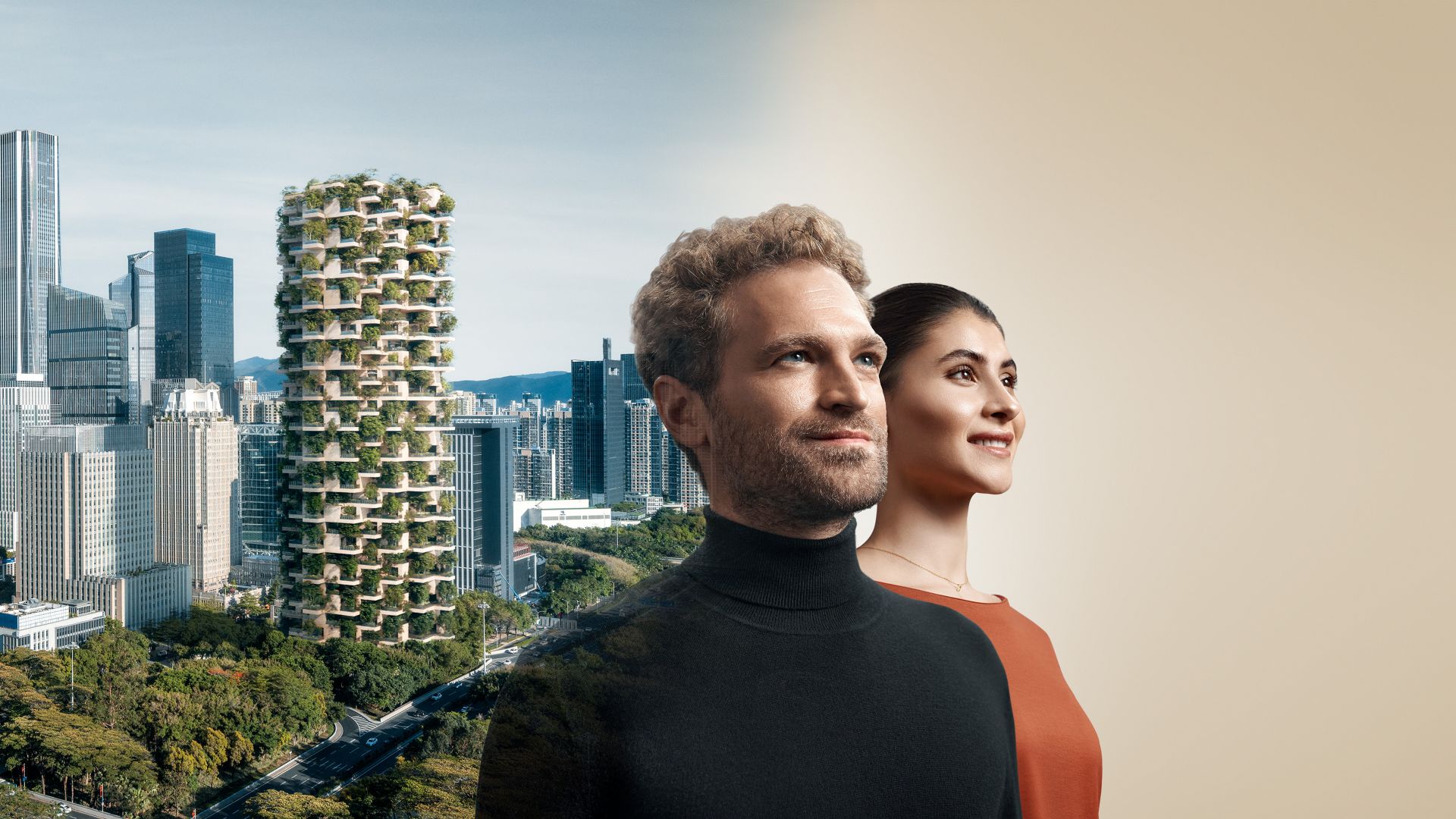Sustainability beyond the expected
The Sustainable Construction Revolution and How it Affects You
When you imagine your ideal future city, what does it look like? Would it have flying cars? Robot dog-walkers? Zero pollution? These are some of the questions that governments, engineers, and urban planners ponder on a regular basis.
Urbanization and population growth are some of society’s most pressing issues. But as cities like London, Tokyo, and Bangkok reach capacity, urban living is becoming less viable. The sustainable construction revolution offers promising solutions for that. Architects are currently designing smart cities that are taller, cleaner, and – above all – more sustainable. They are characterized by high living standards, including ample green spots, digitalization, connectivity, and the efficient use of space to minimize resource consumption.
Smart Cities are Green
Your future home will have energy-saving features in place, like a green roof. Sika facilitates building reuse with products like Sika Sarnafil® while cool roof technology can reduce the heat island effect and extend service life, which saves materials and cost.
Chicago’s City Hall illustrates how installing a Sarnafil® green roof can be transformational. It saves the City of Chicago over USD 10,000 annually in energy costs. During the scorching summers and brutal winters, the roof exhibits excellent insulation properties, increasing comfort for the people inside this very high-traffic building. Additionally, it reduces storm water runoff by absorbing as much as 75% of the rainwater that falls on it. The vegetated roof improves air quality and absorbs noise. Finally, it extends its own life by moderating the extreme temperatures that are typical to Chicago. Where the average building’s roof may last 20 years, green roofs can endure up to 50.
Sika offers a host of sustainable product options that increase the durability of our structures. One example of this is Sikagard®-5500, the first bio-based sustainable protective coating on the market. Another example is SikaCeram®-252 Impact, a versatile, cement-free tile adhesive that can reduce CO2 emissions by 50%.
From optimizing energy and material efficiency to reducing waste and CO2 emissions, Sika develops innovative ways to advance the circular economy. Whether its cement-free tile adhesives, cashew nut ash in concrete, sun-reflective rooftops, or bio-based admixtures, Sika is constantly pushing the boundaries of science to benefit customers and the earth.
Innovating to Net Zero
Sustainability has been a key factor in Sika’s corporate strategy for over a decade. The motto of Sika’s Capital Markets Day 2022 was “Our Path to Net Zero.” Here, the management explained how the company will maintain a high level of growth while achieving its net zero targets by 2050. Sika supports the Science Based Target initiative (SBTi) and joined the growing group of leading corporations that are reducing emissions along their entire value chain.
Sika is enabling its major clients – the construction and manufacturing industries – to become far more sustainable. We are reducing the impact of climate change with our technologies, products, and services, especially since the growing population needs cleaner, more energy-efficient cities.
So, while you still need Bruce Willis in The Fifth Element for your flying car fantasy, our future dream cities are not that far removed from our present-day ones thanks to pioneering and sustainable building techniques that Sika is accelerating.
The sustainable construction revolution will change your life. It will massively improve the ambience, comfort, and convenience of the places where you live, work and play. With waterproofed basements, soundproofed apartments, and bio-based materials, Sika is facilitating the construction of smarter cities with buildings that are more livable in the long-term. Cities are becoming higher and greener, allowing you to live in harmony with your outside world.
Would you like to learn more about Sika solutions?

